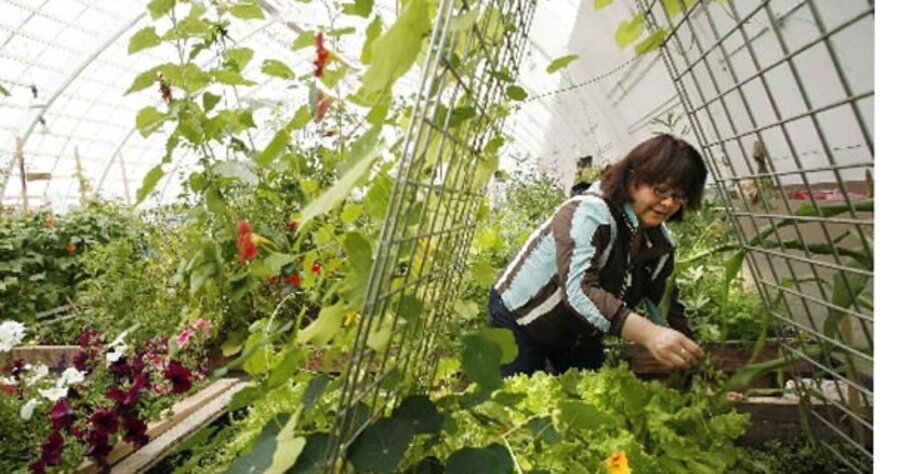Raising vegetables in Canada's midnight sun
Loading...
| INUVIK, Northwest Territories
Amanda Joynt reached down and picked a fresh tomato from the vine. That’s no small feat when you are living 120 miles above the Arctic Circle in Canada’s Far North.
Ms. Joynt, a resident of Inuvik, is a member of the town’s community greenhouse, a former ice hockey arena that has been converted into an oasis of vegetables and flowers on the permafrost.
The building, shaped like a half-pipe, is North America’s northernmost commercial greenhouse, and all but a necessity for anyone interested in eating a fresh vegetable in Inuvik that has not been shipped in from a warmer climate at a startlingly high cost.
“The growing season is really short here. May is mud month, so June is when things begin to green-up, and by now everything is turning into fall,” Joynt said.
Inuvik’s annual mean temperature is minus 14.5 degrees F., according to local officials.
The facility’s indoor growing season lasts only from mid-May to late September, but it protects the plants as they soak in the sunlight that for 56 days each summer keeps the town in daylight 24 hours a day.
“That’s what makes things possible ... the constant light accelerates the growth. I think it either doubles or triples the growth,” said Lucy Kuptana, who admits it can feel strange weeding a garden at 3 a.m. in full daylight.
The small plots are built on raised beds and host a wide range of vegetables, such as corn and squash. One garden was even adorned with a traditional scarecrow figure, and many also have a range of colorful flowers.
Part of the building is heated to allow the greenhouse to raise the starter-plants used by gardeners and to grow flowers that are sold to the town and local residents for the summer.
Inuvik, with a population of about 3,400 people, was created in the late 1950s as a center for government services, so many of the greenhouse’s members are residents who moved north to work in the public sector or energy industry.
Ms. Kuptana admits that, like many people born in the Far North, she knew nothing of gardening until she began helping her stepmother — who was one of the greenhouse’s first members when the project was launched in 1998.
The greenhouse plays an educational role by teaching people about healthy foods they would normally only see in their canned or frozen form, according to Kuptana.
“A lot of people have never tried squash or zucchini. They don’t know what that strange-looking vegetable is, so this is introducing new vegetables to the table,” she said.
It also allows people to save money. Rising fuel costs make it expensive to transport food to the region. Many of the greenhouse gardeners are also canning the produce they do not eat during the summer.
“Food security is a huge issue in the north,” Kuptana said.
Kuptana and Joynt also think the greenhouse also has potential as a tourist attraction, saying it is already become a popular stop for visitors who venture north in the summer in search of the midnight sun.





